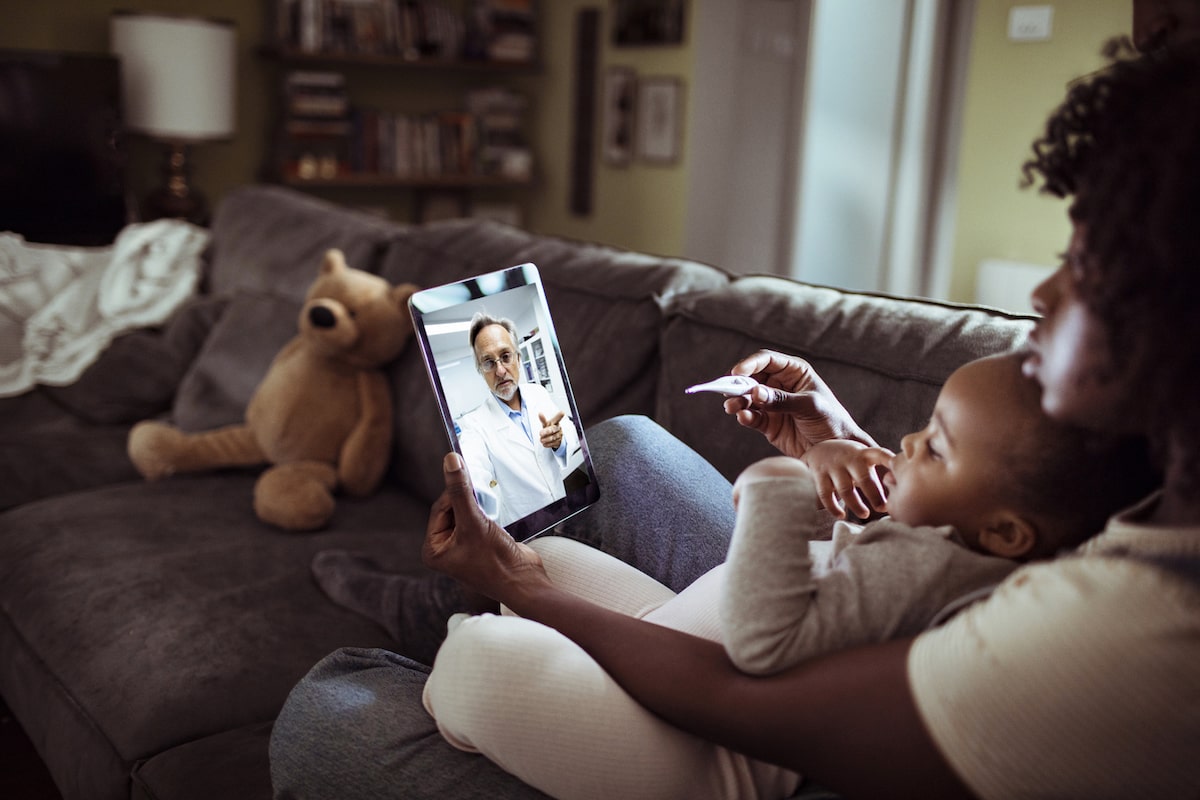<< Back
Virtual Health Visits Nearing 200,000 Since COVID-19. Here’s How it Works.

June 18, 2020
Telemedicine was not a new concept when the COVID-19 pandemic locked society down in March, it was simply underutilized.
“I’ve been using virtual visits for several years now with my pacemaker patients,” said Dr. Steven Zweibel, system director of cardiac electrophysiology for the Hartford HealthCare (HHC) Heart & Vascular Institute.
After having a pacemaker implanted, he said patients use virtual health, or video visits, for regular follow up appointments with him. It’s both convenient and effective, he said.
Dr. Zweibel has been a driving force behind efforts to accelerate telehealth capabilities at HHC. From March 2019 to March 2020, he said there were 400 telehealth visits across the system. Since March, the system has logged more than 193,000 virtual health visits.
“(Virtual health) is a huge benefit for patients and providers. It improves access to specialists and primary care providers and improves the patient experience,” Dr. Zweibel said.
With such success, he said the system will continue offering telehealth visits when appropriate even after COVID-19 eases.
Telehealth visits are a solution if you are immunocompromised and still self-isolating or you want to schedule an appointment with a specialist in another part of the state and would rather not make the long trek. All you need for virtual visit is a cellphone, computer or tablet that can connect to a special software that links you and the provider by video.
Telemedicine works for a wide variety of basic primary care concerns – colds, skin problems, urinary tract infections, migraines, diabetes or asthma – as well as behavioral health issues like depression and anxiety. In addition, it’s ideal for follow-up visits and to check in for medication refills.
To prepare for a telehealth visit, you should:
- Check your technology. Your clinician’s office staff can tell you what you need and how to log in. You may need to download video conferencing software and create an account, so give yourself time to do that. Make sure your device is charged before the visit.
- Have your information handy. Make a list of the medications you take, as well as the location and phone number of your pharmacy.
- Write down your symptoms. It’s easy to forget in the moment, so take the time before the visit to write down any symptoms you’re having in as much detail as possible.
- Write down your questions. Keep paper and a pen handy to write down the answers and other key information during the visit.
- Take your vitals. Your provider might want to know your temperature or weight so take them before the visit.
- Pick a quiet place. You should be focused on the visit, so choose a place in your home that’s quiet with no distractions, and well lit so your provider can see you clearly.
Need to see your doctor? New Patient? For more information about Hartford HealthCare virtual health visits, click here.
Click here to schedule a virtual visit with a Hartford HealthCare-GoHealth Urgent care doctor.
Stay with Hartford HealthCare for everything you need to know about the coronavirus threat. Click here for information updated daily.
Questions? Call our 24-hour hotline (860.972.8100 or, toll-free, 833.621.0600).
Get text alerts by texting 31996 with COVID19 in the message field.